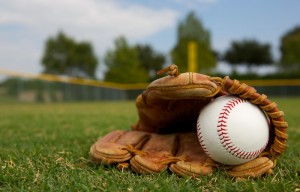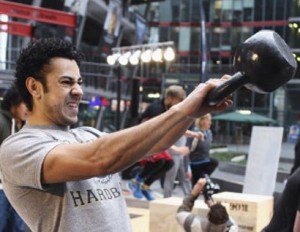Catch up on all the latest at OSS! Check out the November Newsletter here.
MLB World Series Injuries
Rounding the Bases to Catching Fly Balls
 The 2014 Major League World Series begins this week with a frenzy of predictions from the sports experts and fans from both the San Francisco Giants and the Kansas City Royals predicting that their respective team will win.
The 2014 Major League World Series begins this week with a frenzy of predictions from the sports experts and fans from both the San Francisco Giants and the Kansas City Royals predicting that their respective team will win.
Baseball, a game routed in tradition, history, superstition and sometimes, injuries.
Common Injuries
 More than 627,000 baseball injuries each year are treated by medical professionals, according to the U.S. Consumer Products Safety Commission. Baseball is not a contact sport, but contact with a ball, bat, or another player results in the most serious injuries.
More than 627,000 baseball injuries each year are treated by medical professionals, according to the U.S. Consumer Products Safety Commission. Baseball is not a contact sport, but contact with a ball, bat, or another player results in the most serious injuries.
The most common injuries include repetitive use injuries to the shoulder and elbow, muscle pulls, contusions, ligament injuries, black eyes, concussions and lacerations. Knee injuries also are relatively common.
Some of these injuries can be career ending if severe enough, as joint replacement sometimes does not work well for athletes.
Your feet also take a beating when playing baseball. Baseball players are at risk from various injuries, including:
1. Ankle sprains may occur while running, fielding balls, stepping on or sliding into bases. Sprains should be evaluated by a foot and ankle surgeon to determine the extent of injury, including possible peroneal tendon injuries or fractures. The foot and ankle surgeon will develop a treatment plan: failure to fully treat and rehabilitate a sprain may lead to chronic ankle instability and recurrent sprains.
2. Overuse or excessive training may sideline some athletes with Achilles tendinopathy or heel pain (often plantar fasiciitis, or calcaneal apophysitis in children and adolescents).
3. Contusions may occur from impact with the ball or contact with other players.
4. Cleats may pose challenges in the forefoot and aggravation of neuromas, sesamoids, bunions, and hammertoes. To stay at the top of your game, ensure that cleats are fitted properly and have injuries evaluated by a foot and ankle surgeon.
According to Dr. Reed, “While baseball is a less violent sport than football, athletes can be prone to foot and ankle injuries often due to the quick bursts of required running or sliding. Orthopedic foot and ankle surgeons are uniquely trained to provide expert care of baseball-related injuries, including turf toe, osteochondral defects, ankle instability and Achilles tendinitis or rupture.”
Good luck to both the Giants and the Royals! Here’s hoping no one gets put on the DL list during the series!
If you believe you are suffering from a sports-related injury and need specialized care, the physicians at Orthopedic Specialists of Seattle provide excellent treatment options available for you. Please feel free to contact OSS at (206) 633-8100 to schedule an appointment.
CrossFit Injuries – Are You Feeling the Pain?
 CrossFit is a mode of exercise that targets cardiovascular and respiratory endurance, strength, flexibility, mobility, stamina, power, speed, agility, coordination and balance. The workouts change daily and can be performed by individuals at all fitness levels.
CrossFit is a mode of exercise that targets cardiovascular and respiratory endurance, strength, flexibility, mobility, stamina, power, speed, agility, coordination and balance. The workouts change daily and can be performed by individuals at all fitness levels.
Most Common CrossFit Injuries
The most common injuries from CrossFit are from use of poor form with the exercises. Standard push-ups, handstand push-ups, push press, push jerk, kipping pull ups, hang power clean, hang power snatch, ring dips, overhead squatting, and many more are all great exercises at high intensity.
However, they are very stressful, especially on the shoulder – if you don’t have proper scapular positioning and proper stabilizing strength throughout the rotator cuff and scapula. So the next time you are performing these, focus on where your shoulder blade is positioned and try to avoid what we call “winging” by keeping the shoulder blade “pinched back”.
High Intensity Exercise
The intensity level of CrossFit pushes an individual to their limits every day and over time, overuse of the shoulder and other joints in the body can lead to an injury if not attended to prior to performing another CrossFit session. Studies suggest that constantly exercising at high intensity may even provoke overtraining — a drop in energy and performance that happens when the body isn’t able to fully recover from workouts.
Intermittent high-intensity exercise is a great way to get fit, but only when the body can recover. By not overdoing it, you avoid the risk of injury. If you are considering a CrossFit regimen, call OSS and schedule an appointment with one of our physicians about how to proceed in getting the most out of your CrossFit workout without injury.
According to Dr. Reed, “CrossFit is an exercise regimen that can lead to huge performance gains and improved athletic and cardiovascular function when performed correctly and safely. It’s important that each individual concentrates on good form and optimal nutrition and hydration, and keeps on the lookout for signs and symptoms of overtraining.”
If you believe you are suffering from a workout-related injury and need specialized orthopedic care, the physicians at Orthopedic Specialists of Seattle provide excellent treatment options available for you. Please feel free to contact OSS at (206) 633-8100 to schedule an appointment.
Save the Dates for OSS Physicians Speaker Series!
Save the Dates! OSS physicians will be speaking about several orthopedic health and information topics from October – December 2013 at Swedish Ballard. Below is a list of dates and times for you to choose from:
October 2, 2013
Dr. Peterson: Joint Replacement: The Right Choice for You? 6-8 p.m. at the Swedish Ballard Campus. Free hip- and knee-replacement seminar. If you have arthritic joint pain and are considering joint replacement, you’ll want to attend this important class. If you have arthritic joint pain and are considering joint replacement, you’ll want to attend this important class. Dr. Peterson will discuss hip- and knee-replacement surgery, as well as the latest in robotic-assisted surgery for those who have advanced arthritis in part of their knee. There will also be a question and answer session with Dr. Peterson.
Find out more and register here!
October 9, 2013
Dr. Weil: Relief from Your Hand and Wrist Pain. 6-8 p.m. at the Swedish Ballard Campus. Learn about treatments for different types of fractures; ways to treat arthritis in the wrist, thumbs and fingers; and how to prevent and treat carpal tunnel syndrome and other overuse conditions.
Find out more and register here!
November 13, 2013
Dr. Reed: Relief from Your Foot and Ankle Pain. 6-8 p.m. at the Swedish Ballard Campus. The foot and ankle are two of the most often under-treated structures of the body. Dr. Reed, who specializes in the care of the foot and ankle will discuss the anatomy and common injuries and disorders of the foot and ankle, and treatment options for the conditions. There will be a question-and-answer session with the surgeon included in the class.
Find out more and register here!
December 4, 2013
Dr. Ruhlman: Relief from Your Hand and Wrist Pain. 6-8 p.m. at the Swedish Ballard Campus. Learn about treatments for different types of fractures; ways to treat arthritis in the wrist, thumbs and fingers; and how to prevent and treat carpal tunnel syndrome and other overuse conditions.
Treatment of Cavus Foot Deformity
Cavus Foot Deformity
Now that it’s summer, we spend more time at the beach or swimming pool enjoying the warm weather. As an orthopedic surgeon that specializes in conditions of the foot and ankle, I tend to notice wet footprints across the pool deck or in the sand and cannot help but analyze the health of the individual’s feet. One of the conditions that I notice is the high arched foot, medically termed pes cavus. This is noticeable by a footprint that is pronounced in the heel and forefoot, with very minimal or even absent impression in the middle part of the foot.
Causes of Cavus Foot Deformity
Pes Cavus is caused by muscle imbalances in the lower leg and foot that draws the front of the foot, or sometimes draws the heel downward, making the arch higher than normal. It usually begins during childhood and may be associated with neurological conditions such as muscular dystrophy or spina bifida, but not always. In many cases the muscles of the feet become tighter or weaker for unknown reasons. As with many medical conditions, genetics play a role in who will become afflicted with high arches.
Symptoms of Cavus Foot Deformity
High arches can cause a number of symptoms, ranging from mild to severe. Pain in the forefoot is a common occurrence due to increased weight bearing in this area. Excessive callus buildup at the ball of the foot behind the great toe as well as just behind the fifth toe is common, as these become high-pressure areas during standing and walking. Tightness in the calf muscles is often present, and the individual may also suffer from recurring ankle sprains due to the inwardly rolled ankles associated with the deformity.
Diagnosis of Cavus Foot Deformity
Identifying pes cavus is a straightforward process. The high arched foot is noticeable to anyone, but an orthopedic surgeon should evaluate the individual in order to identify some of the nuances of the condition. Diagnosing which muscles are tight or weak and assessing their potential to be stretched or strengthened is important for initiating an effective treatment plan.
Also, the cavus foot causes increased body weight to be distributed through areas of the foot that are not designed for this purpose. Evaluation by the surgeon will aid in a proper prescription of orthotics, if deemed necessary.
Treatment of Cavus Foot Deformity
Conservative intervention is generally the rule when starting to treat high arches. Often times if the feet have become painful, orthotic inserts are prescribed. As opposed to pes planus (flat feet), which is often a flexible disorder of the foot that we try to correct with orthotics (i.e., push back into the correct position), pes cavus is usually a rigid deformity,meaning that the shape of the foot cannot be changed.
In this case, the goal of orthotics is to accommodate the shape of the foot and to redistribute body weight over a larger area. Because of the rigidity, the cavus foot is not able to flex and absorb impact as the individual walks. For this reason, orthotics are usually constructed of softer materials to act as a shock absorber.
Physical therapy may also be prescribed to stretch and strengthen the muscles of the lower leg. Tight calf muscles and weak muscles along the outside of the lower leg (peroneal muscles) are often present in pes cavus. While therapy cannot change the shape of the foot, it may be able to help with pain control and function. Because the foot is usually rolled inward along with the high arch, the individual is susceptible to chronic ankle sprains and some reactive muscle strengthening may be beneficial, along with ankle bracing.
If conservative treatment fails to achieve the desired result, then surgical correction maybe necessary. There are many types or surgeries that the physician can perform based on individual need:
- Tendon lengthening: This procedure involves making precision cuts in the tight tendons of the lower leg to allow better alignment of the foot. Following surgery,there is a period of immobilization for several weeks to allow the tendons to heal.
- Osteotomy (bone cut/realignment): If the condition has been present since childhood and the bony structure of the foot has grown abnormally, then small sections of bone may need to be removed in order to restore proper position of the foot. The first metatarsal, located in the midfoot behind the great toe, is often treated with an osteotomy. The metatarsal often is positioned at a downward angle that is greater than normal, which in turn rolls the ankle toward the outside of the foot as the person bears weight.
The osteotomy procedure seeks to normalize that angle and place the foot in a neutral position that is perpendicular to the ground. Many times, this osteotomy is performed in conjunction with soft tissue surgery such as tendon lengthening. Also, the calcaneus (heel bone) tends to be oriented toward the midline in pes cavus, as opposed to away from the midline in the normal foot, and sometimes an osteotomy is required to correct this.
- Arthrodesis: Also known as a joint fusion, this procedure permanently locks the affected joint into a fixed position. It is a last resort option, but sometimes necessary when the cavus foot deformity is severe or when arthritis is present.


